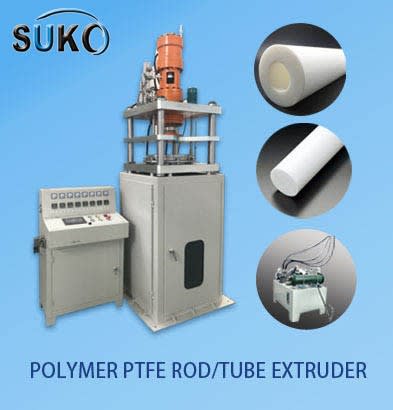PTFE products are a special type of plastic, which is quite different from other plastics. According to the industry standard of the Ministry of Light Industry, the PTFE products produced must meet the requirements of the index. Below we list the definitions of the 13 main test indicators for for reference.
1. The coefficient of linear expansion indicates the degree of expansion or contraction of the material. It refers to the expansion ratio of the finished polytetrafluoroethylene plastic at a temperature of 1 ° C under a certain pressure, expressed as the coefficient of linear expansion relative to the unit length. This coefficient is one of the important indicators for understanding the degree of change in product size with increasing temperature of PTFE products, expressed in units of 1/°C or 1/K. The coefficient of linear expansion coefficient is α = ΔL / (L * ΔT), where ΔL is the change in the length of the object at the given temperature change ΔT, and L is the initial length. The linear expansion coefficient of PTFE is about 10-12*10-5/°C (ambient temperature 25-250°C), ie (0.01-0.012)%, and the linear expansion coefficient of PTFE is 10~20 times that of iron, which is larger than most plastics.
2. Thermal conductivity: Also called thermal conductivity, it reflects the thermal conductivity of the material. It is defined as two parallel planes with an area of 1 m2 perpendicular to the direction of heat conduction inside the object. If the temperatures of the two planes differ by 1 K, the heat is transferred from one plane to the other in 1 second. The unit is defined as the thermal conductivity of the substance, and its unit is watt·m-1·open-1 (W·m-1·K-1). It is a reference indicator for studying the thermal insulation of target products when designing products.
3. The tensile strain at break is the tensile strain corresponding to the tensile fracture stress when the sample of the polytetrafluoroethylene product is not fractured under the tensile load, and the tensile strain is just when the sample material is plastically shaped. The ratio of the difference between the length to the original length and the original length, expressed as a percentage (%).
4. Tensile strength: In the test of tensile specimens, the critical value of the transition from uniform plastic deformation to local concentrated plastic deformation, characterizing the resistance of the material to the maximum uniform plastic deformation, is also the maximum load carrying capacity of plastic under static tensile conditions ( Maximum tensile stress). The unit is MPa.
5. Elongation at break: It is the increment of the index from the original unit length (ie the rate of change of length), which is the ratio of the difference between the length of the pull-off and the original length to the original length, expressed as a percentage (%).
6. Electrical strength: A parameter indicating the breakdown of equipment insulation at a certain rated voltage, indicating the degree of insulation of the product withstand voltage. It means that under certain conditions, the ratio of the breakdown voltage to the thickness of the sample to be broken is the electrical strength of the product.
7. Breakdown voltage: The voltage at which the test piece breaks down is the highest voltage before being penetrated. That is, the sample does not break down at this voltage. The breakdown is usually caused by a partial discharge in the gas or liquid medium surrounding the sample and the electrode, and the sample at the edge of the smaller electrode (or equal-diameter two electrodes) is destroyed.
8. Density The ratio of the mass of a substance to its volume, that is, the mass of a substance per unit volume, is called the density of this substance. Kilograms/meter 3 or 1 gram per cubic centimeter 1.0 x 103 kg/m3 of polytetrafluoroethylene plastic products are usually tested by dipping, liquid pycnometer and titration.
9. Withstand voltage is the sample between the electrodes, the power frequency AC voltage rises to the voltage before the breakdown is the withstand voltage of the sample.
10. Fracture Nominal strain refers to the tensile strain corresponding to the fracture stress when the tensile specimen is not yielded and the fracture specimen is subjected to the specified specimen size, and the % is expressed by a dimensionless ratio or percentage.
11. The longitudinal dimensional change rate means that the pipe (100 ± 1) with a certain length is placed in a (260 ± 2 ° C) oven for 3 hours, and taken out at a normal temperature of 23 ± 2 ° C for 4 hours. The length of the treated sample is The percentage of the difference between the original size and the original size.
12. Dielectric strength is a measure of the electrical strength of a material as an insulator. It is defined as the maximum voltage per unit thickness that a unit is subjected to when it is broken down, in volts per unit thickness. The ratio of breakdown voltage to sample thickness. The breakdown voltage is tested according to GB/T1408.1-2006. The dielectric strength is in kilovolts per millimeter (KV/mm).










